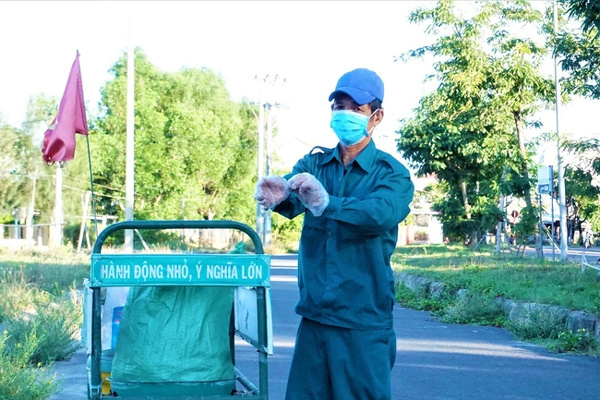Living with endometriosis – All you need to know
Living with endometriosis is more than just a painful menstrual cycle for women. And this article will cover how some simple changes to your diet, along with some medical treatments, can help you live a more enjoyable life with endometriosis. .
What does endometriosis feel like?
Endometriosis occurs when tissue similar to that found in the lining of the uterus grows abnormally in the pelvic organs — the uterus, ovaries, fallopian tubes, intestines, or bladder. Each month, the abnormal tissue falls away without going anywhere, causing lesions, adhesions, and cyst formation in these areas.
Some women with endometriosis have mild or no symptoms. People with symptoms often experience dysmenorrhea, pain during intercourse, pelvic pain, or infertility.

(Photo: swlondoner.co.uk)
Dysmenorrhea
Menstrual cramps are a normal part of a woman’s monthly cycle. However, severe cramping, known as dysmenorrhea, can result from endometriosis. This pain becomes a symptom before or after your period. Heavy bleeding can also occur at the same time as painful cramps. You may also have pain when urinating or having a bowel movement.
Painful intercourse
During sex, some sites and depths of penetration can be painful. In most cases, this pain comes from contact with scar tissue, cysts, lesions, or adhesions.
The location, not the size, of the abnormal tissue determines the severity of the pain. For example, the tissue behind the vagina and uterus can be sore. In healthy women, a layer of tissue separates the vagina, uterus, and rectum. Endometriosis tissue can adhere to these organs, sometimes fusing them together to create mobility restriction.
Talk to your partner if you feel pain during sex. Often, the presence of pain can be cyclical with anxiety and doubt. Then, when participating in intercourse, anxiety and stress can cause the vagina to spasm, making intercourse even more painful.
While eliminating intercourse altogether is an option, some women find relief simply by timing sex with their partner. The time before and after your period may not be as painful.
Pelvic and abdominal pain
Pelvic and lower abdominal pain occurs due to abnormal growth of tissue on or around the organs in these areas — the ovaries, fallopian tubes, uterus, rectum, colon, and bladder. This pain is not limited to the menstrual cycle. Some people with endometriosis experience constant, chronic pain.
Even people with stage 1 endometriosis can still experience significant pain because the lesions have their own nerve connections. These nerves still send signals to your brain to signal pain, even if there’s only a few lesions.
Because abnormal tissue can obstruct the lower digestive tract, such as the colon and rectum, endometriosis can also cause pain during bowel movements. In some cases, it can affect the intestine’s ability to absorb water (causing diabetes) or when stool moves too slowly through the colon (constipation). It can also affect the bladder, making it difficult to urinate.

Dry
The effects of endometriosis go beyond pain and physical discomfort. Anywhere, 30 to 50% of women with endometriosis may be infertile. According to the American Society for Reproductive Medicine, women with moderate to severe endometriosis have a monthly pregnancy rate of less than 2%, compared with 2 to 4.5% for mild and moderate endometriosis. 15 to 20% for women without endometriosis.
It’s not clear what the exact cause of infertility is, but it’s thought to be related to inflammation that disrupts the union of sperm and egg to form an embryo. When the lesion is large, sticky, or cystic, there is a higher chance of infertility due to physical obstruction. For example, a growth near an ovary can prevent an egg from being released.
Stages of endometriosis
Endometriosis can be classified as one of four stages through a system developed by the American Society for Reproductive Medicine. Using specific criteria, endometriosis is scored using a scoring system based on the location of the tissue, the number of implants, and the depth of the implant.
Most women with endometriosis are mild, although it’s important to note that the stage of the disease doesn’t affect the severity of symptoms. In other words, a person with endometriosis may experience severe pain with a stage 1 diagnosis requiring only some implantation while someone with a stage 3 diagnosis may have no symptoms at all.
State 1: Minimal – This category includes several superficial implants.
Phase 2: Mild – This includes more deep implants.
Stage 3: Moderate – This type includes many deep tissues, including small cysts on the ovary. These blood-filled cysts are called endometriomas, or chocolate cysts, because of their deep, brown color. There is also the presence of fibrous binders.
Stage 4: Serious – This includes many deep tissues, including large cysts on the ovaries the size of a grapefruit. There are also many dense adhesives. Severe endometriosis can cause scarring, blocked fallopian tubes, and damage to the ovaries.
Endometriosis diet

The abnormal tissue associated with endometriosis can lead to inflammation that causes pain and swelling. One way to help control this inflammation — or at least not make existing inflammation worse — is through the foods you eat.
Eat what?
One way to fight inflammation is to eat foods with antioxidant properties. Many fruits and vegetables contain polyphenols, which are chemicals found in plants. Polyphenols may have antioxidant properties that help fight inflammation.
Examples of foods naturally rich in antioxidants include:
– Berry
– Apple
– Green vegetables (spinach, kale)

(Photo: Nutrition Wisdom)
– Yam
– Tomato
– Citrus fruits
– Nuts
– Carrot
– Pea’s tree
– Chilli
– Egg
Because vitamin B1 and magnesium have been shown to reduce symptoms associated with menstrual pain, they may also help relax painful reproductive organs affected by endometriosis. Whole grains, nuts, legumes, and certain fruits and vegetables (oranges, spinach, avocados, and kale) are high in this mineral.
For more information, here are the foods to eat to reduce inflammation:
As for estrogen, regular bowel movements help the body get rid of excess estrogen. High-fiber foods, such as fruits, vegetables, whole grains, and legumes, add bulk to stool to help it move through the digestive tract.
What should not eat?
You should avoid any foods with inflammatory properties if you have endometriosis. This includes:
– Coffee and other caffeinated beverages

Coffee is on the list to avoid if you have endometriosis. (Photo: Irish Times)
– Large amount of alcohol
Protein rich in saturated fat, such as red meat and pork
– Add sugar
– Processed food
– Fried foods
How to treat endometriosis?
Pain medication and hormone therapy are often the first line of defense for treating endometriosis. In more severe cases, surgery is needed to remove the tumor.
Analgesic
Pain relievers, such as over-the-counter nonsteroidal anti-inflammatory drugs (NSAIDs), can help relieve the mild symptoms associated with endometriosis. Prescription pain relievers may also be prescribed by your doctor for more severe symptoms.
Hormonal therapy
Like the menstrual cycle, endometriosis uses hormones to go through a cycle. Hormonal therapy can help relieve symptoms by changing hormone levels.
For women who are not trying to get pregnant, oral contraceptives, progestins, and gonadotropin-releasing hormone (GnRH) agonists can help slow or stop the growth of endometriosis tissue.
Birth control pills: Taken by mouth, these pills often contain estrogen and progestin (synthetic progesterone) to reduce both the length and severity of your periods.
Progesterone / progestin: Taken by mouth, injection, or through an implanted device, these drugs reduce menstrual flow and may help reduce lesion size.
Danazol: Taken by mouth, this male hormone renders growing cells inactive so they cannot grow. It also lowers estrogen levels to help relieve symptoms.
GnRH . agonists: Taken by mouth, injection, or nasal spray, this medication prevents ovulation and menstruation by reducing estrogen levels to menopausal levels.
Surgery
Women who want to become pregnant or are infertile often choose surgical intervention to help treat endometriosis.
Surgical options include the following procedures:
Laparoscopy: This is a minimally invasive surgery that involves a tiny camera with a light inserted through a small incision. Once inside the pelvis, the surgeon can then excise (remove) or cauterize (destroy) the lesions. Scar tissue may also be removed during this procedure.
– Laparotomy: Considered a major surgery with larger incisions, laparotomy is an abdominal procedure to remove larger tumors.
Hysterectomy: Often considered a last resort, this surgery involves removing the uterus. In some cases, the ovaries and fallopian tubes are also removed in a procedure called total hysterectomy and bilateral salpingectomy. The main downside of having a hysterectomy is that you lose the ability to have children in the future.
* Invite readers to watch programs broadcast by Vietnam Television on TV Online and VTVGo!
at Blogtuan.info – Source: vtv.vn – Read the original article here



